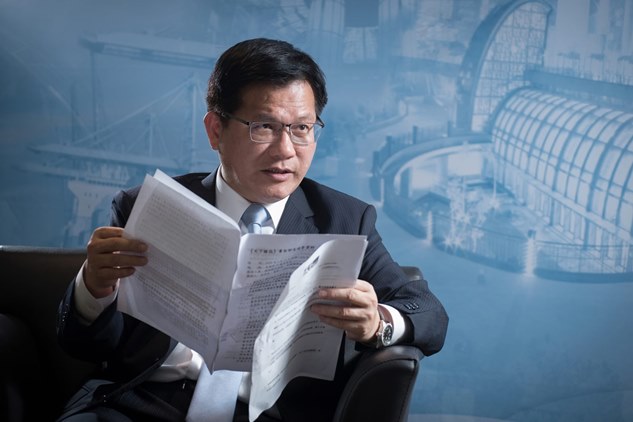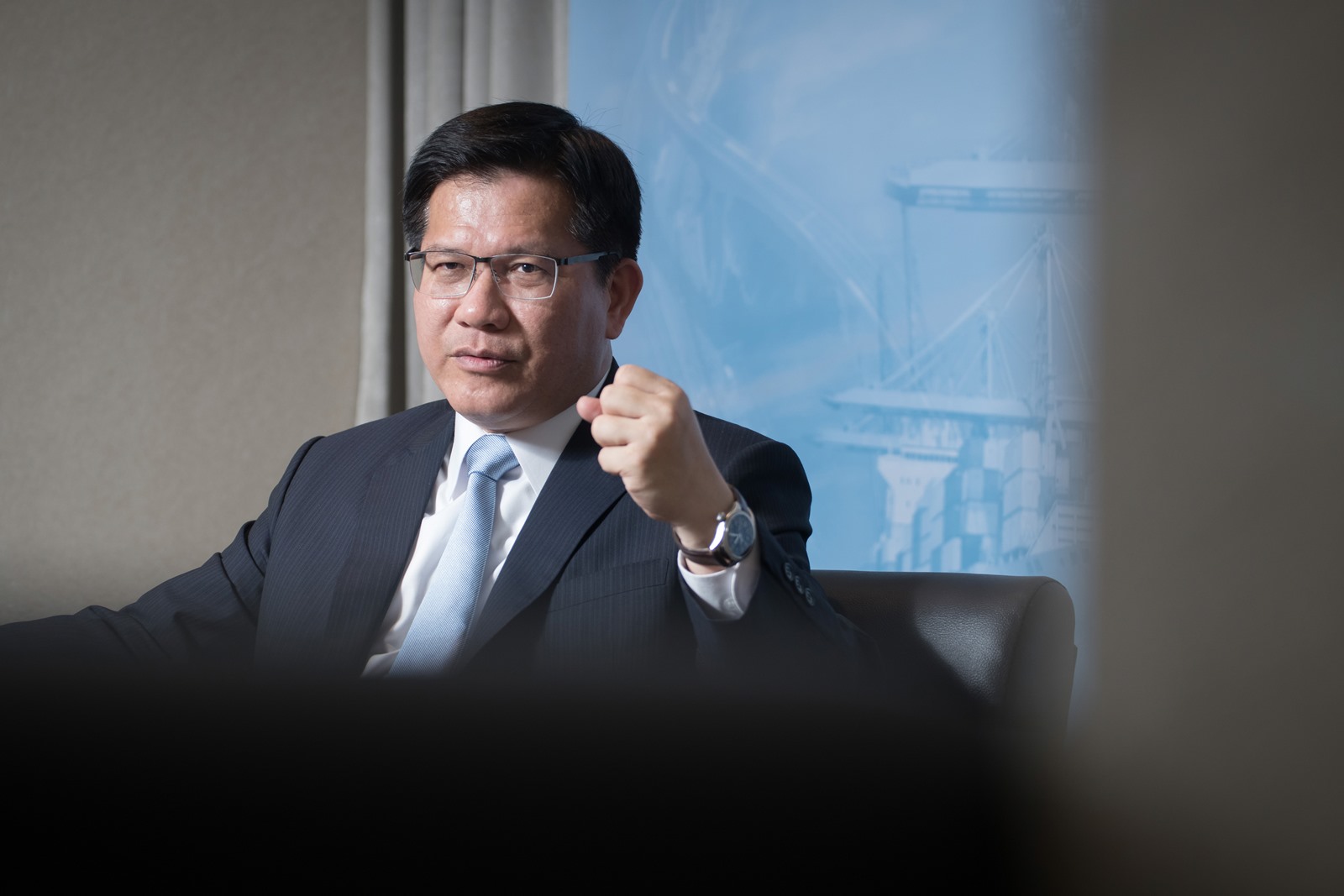Minister of Transportation and Communications
Beyond Relief Packages, a Chance for Taiwan to Transform into a Tourism Hub

Source:Ming-Tang Huang
In early April, in preparation for the financial crisis that may come in the wake of the COVID-19 pandemic, the Tsai Ing-wen administration promised to expand the government’s economic relief package to NT$1.05 trillion. However, Minister of Transportation and Communications Lin Chia-lung observes that: “Giving away money will never be enough; the key is how to increase our global competitiveness.” He says that, after the pandemic has passed, Taiwan can use its success against the virus as a foundation for it to transform into a major tourism hub. Visitors around the world will come to Taiwan, secure in the knowledge that this is a safe place for tourism and investment.
Views
Beyond Relief Packages, a Chance for Taiwan to Transform into a Tourism Hub
By Rebecca LinFrom CommonWealth Magazine (vol. 695 )
Editor’s note: Read our latest stories on the COVID-19 global pandemic
In the current administration, if President Tsai Ing-wen is the architect and Premier Su Tseng-chang is the executor, then Minister of Transportation and Communications Lin Chia-lung may be the radar on the front line. From his vantage point, he has firsthand observations about how Taiwanese industries, ranging from tourism to aviation, are suffering from the COVID-19 pandemic. He has the means to propose countermeasures that will place Taiwan’s economy in a good position for what may come in the future.
Though Taiwan was the first country in the world to propose an economic relief package during the pandemic, once the special budget has been cleared by the Legislative Yuan, it also became the country facing the fewest economic problems. This is true from both a budgeting angle and a GDP-percentage angle.
The strategy proposed by the Ministry of Transportation and Communications combines relief, stimulus, upgrade, and transformation. Not only is it designed to help the tourism and hospitality industries, it will also retain these professions’ core talent, increase their competitiveness, and improve their quality of service.
Riding on the wave of global praise Taiwan received for its fight against COVID-19, and with an eye toward Taiwan’s vaguely -defined tourism selling point in the international market, Lin reiterates his position: “Taiwan is a beautiful island where you can travel with your mind at ease.” Read his interview with CommonWealth Magazine below:
Q: What is the thinking behind the consecutive relief packages the Ministry of Transportation and Communications has provided for Taiwan’s industries?
A: The COVID-19 pandemic spread very rapidly and caused a greater impact than anyone anticipated. The Ministry of Transportation and Communications bore the brunt of it. From aviation to public transport to the tourism industry, the impact has been direct and forceful.
From the very beginning, we came to this realization: Not only must preventative countermeasures against the pandemic be deployed far in advance, the same must be done simultaneously for countermeasures against the economic impact. Our policy should be more than offering relief packages; it must stimulate the industry’s transformation. These are two sides of the same coin.
The actions proposed by the Ministry of Transportation and Communications can be chronologically separated into three phases: relief, stimulus, and transformation and upgradinge.
Out of the NT$60 billion special budget cleared by the Executive Yuan, the majority was allocated to the Ministry of Health and Welfare, the Ministry of Economic Affairs, and the Ministry of Transportation and Communications. But as the pandemic progressed, it was discovered that the first relief package was insufficient. So a second package was cleared. President Tsai Ing-wen approved an additional NT$10 billion relief package for the tourism industry. Cases in the hardest-hit aviation industry will be handled on a by-project basis. NT$5 billion in interest subsidies and credit guarantees will be provided to help the industry access up to NT$50 billion in loans.
In addition to the forward-looking budget’s previous NT$30 billion cap, there are funds from the special budget, and also the additional ten billion promised by the President, which can be used as guarantees and subsidies to help the aviation industry secure loans. In total, the Ministry of Transportation and Communications has access to around NT$42 billion in relief packages. The funds are provided to land, sea, and air transport; to railways and highways; and to the tourism industry.
These additional measures have been received positively by the tourism and travel industries. They appreciate the genuine benefits of the government’s relief packages.
Q: How do you monitor the progress and efficacy of the relief packages?
A: We look at results. There are four divisions within the Ministry of Transportation and Communications that are connected to the relief packages: the Tourism Bureau, the Civil Aeronautics Administration, the Taiwan International Ports Corporation, and the Directorate General of Highways. Everything must be monitored, including the budgets, the beneficiaries, the number of cases, and the total funding amount. The data is compiled and presented during our online meeting every week. I personally oversee their progress.

The money is worthless if it doesn’t reach those in need. It cannot be blocked by red tape. I often say that we need to treat the matter of relief packages as a personal matter. We need to proactively ask if people need help, and we should assist them in solving their problems. I also tell the division managers, if you don’t feel the people’s pain, you may as well be made of stone.
Q: The relief packages you mentioned are effective for a period of three months. But the pandemic may continue beyond that. At the current rate, are we prepared for the challenges to come? Why is the total amount of Taiwan’s relief packages less than that of other countries?
A: During the ongoing pandemic, I feel deeply that the President is very concerned with how to maintain the vitality of our economy. Therefore, from the beginning, it was decided that, while preventing the pandemic is clearly the top priority, countermeasures against the economic impact are also important. Premier Su Tseng-chang drew on Taiwan’s experience with the SARS outbreak: At the time, the decrease in investment and consumption impacted the following year’s GDP growth. Therefore, he asked all the ministries to calculate their expenditures on infrastructure, especially in terms of construction and procurement.
The Ministry of Transportation and Communications is focusing on supporting small- and medium-sized enterprises to prevent layoffs. Larger companies such as airlines are treated on a by-project basis. NT$50 billion in loans have been provided for them.
We have other policy tools at our disposal. There are different types of funds provided by Chunghwa Post. We can also expedite major transportation infrastructure projects to create jobs and keep the economy running.
Based on Taiwan’s experience with SARS and the worldwide impact caused by COVID-19;, and based on the intertwining impact we are seeing on both the manufacturing side and the consumer side, we can forecast that we are looking at an oncoming global recession. This is no longer a problem of short-term relief packages. It is a question of how to sustain the vitality of Taiwan’s economy. Because of this, we are taking stock of all the policy tools at our disposal. It is fortunate that Taiwan’s financial situation is relatively healthy. We should still be around a trillion dollars short of the debt ceiling.
Q: You mentioned transformation and upgrade. If Taiwan is to become a major hub of tourism, what are the criteria we must reach?
A: Last year, I proposed “three arrows” that Taiwan needs to promote tourism. They are: the restructuring of the Tourism Bureau into the Tourism Administration (觀光署); the convening of a national tourism development conference; and the publication of a white paper outlining Taiwan’s tourism plan for 2030. Seeing as how Taiwan has always had a tourism deficit, with 17 million Taiwanese going abroad but only 11 million visitors coming in every year, the total contribution of travel and tourism is only 2.4% of our GDP, which is far less than the 10% average of most other countries.
The investment in and the efficacy of tourism are two sides of the same coin. It is true that we don’t invest enough. The NT$30 billion in the forward-looking budget is to prepare to promote Taiwan as a major tourism hub. Currently, the thirteen tourism spots under the jurisdiction of the Ministry of Transportation and Communications, such as Alishan and Sun Moon Lake, only share an annual budget of NT$3 billion. That’s just two to three hundred million dollars per scenic spot every year.

Next on the agenda is in-depth tourism that focuses on individual regions. In other words, we need to establish a Destination Marketing Organization (DMO; 區域觀光聯盟). Each national scenic area administration will serve as the driving force of that destination. For example, Sun Moon Lake will spearhead the charge for the greater Taichung, Changhua, and Nantou region.
The third task is to turn Taiwan into an “island of tourism”. Everything must be made ready, from hardware to software, such as catering and hospitality services. The key is digital transformation. Taiwan’s prowess in the information technology sector must be utilized to conduct big data analysis, which will yield data that can be used for precision marketing and the establishment of mobile payment systems.
Q: The administration wants Taiwan to be both a shining example of pandemic prevention and a major tourism hub. But an influx of visitors may breach our preventative measures. Aren’t these two aims at odds with one another?
A: Not in the least. In fact, they complement each other. In the wake of this outbreak, when people debate national power in the future, a country’s ability to prevent a pandemic will be counted as an important factor. This is a plus for Taiwan. Our successful prevention of a virus outbreak means everyone can come here to sightsee and invest with their mind at ease. Taiwan needs to change how we market ourselves on the global stage. This is because Taiwan has never been able to clearly define our biggest selling point. It’s our chance to promote what is special about Taiwan.
Q: What do you think is the one sentence we can use to market Taiwan to the world?
A: Taiwan is a beautiful island where you can travel with your mind at ease. The whole world is commending us right now. We need to grab hold of this chance. This wave of global marketing must go hand in hand with our image as a shining example of pandemic prevention. Because if a country can become number one in the world in terms of disease prevention, it must possess both the hardware and software to do so. It is more than unilateral action on the government’s part. It is a joint effort that involves every aspect of society. People will be curious how we made it work.
No one in the world is nearer to China than Taiwan. The American Medical Association predicted that Taiwan would be the most at risk, but instead, we are the safest place. We are locked out of the WHO, when in fact we are the one country the WHO desperately needs to invite to join. This contrast and the paradox are the best promotion for Taiwan. We need to take this chance to push the Taiwanese brand. When people begin to wonder how we did it, they will discover what is special about Taiwan.
Have you read?
♦ Demand Will Slow, Not Disappear, Says Evans Tu
♦ How can Taiwan Cope with the Worst Economic Blow Since WWII?
♦ Let’s seize the opportunity to support industries hit hard by COVID-19
♦ Coronavirus to Take Bite out of GDP - Can Taiwanese Companies Cope?
Translated by Jack Chou
Edited by TC Lin
Uploaded by Judy Lu








